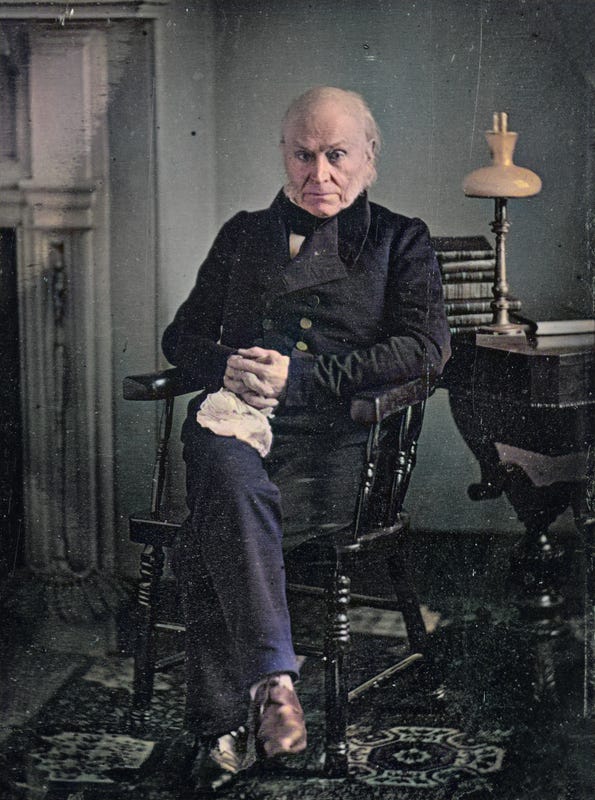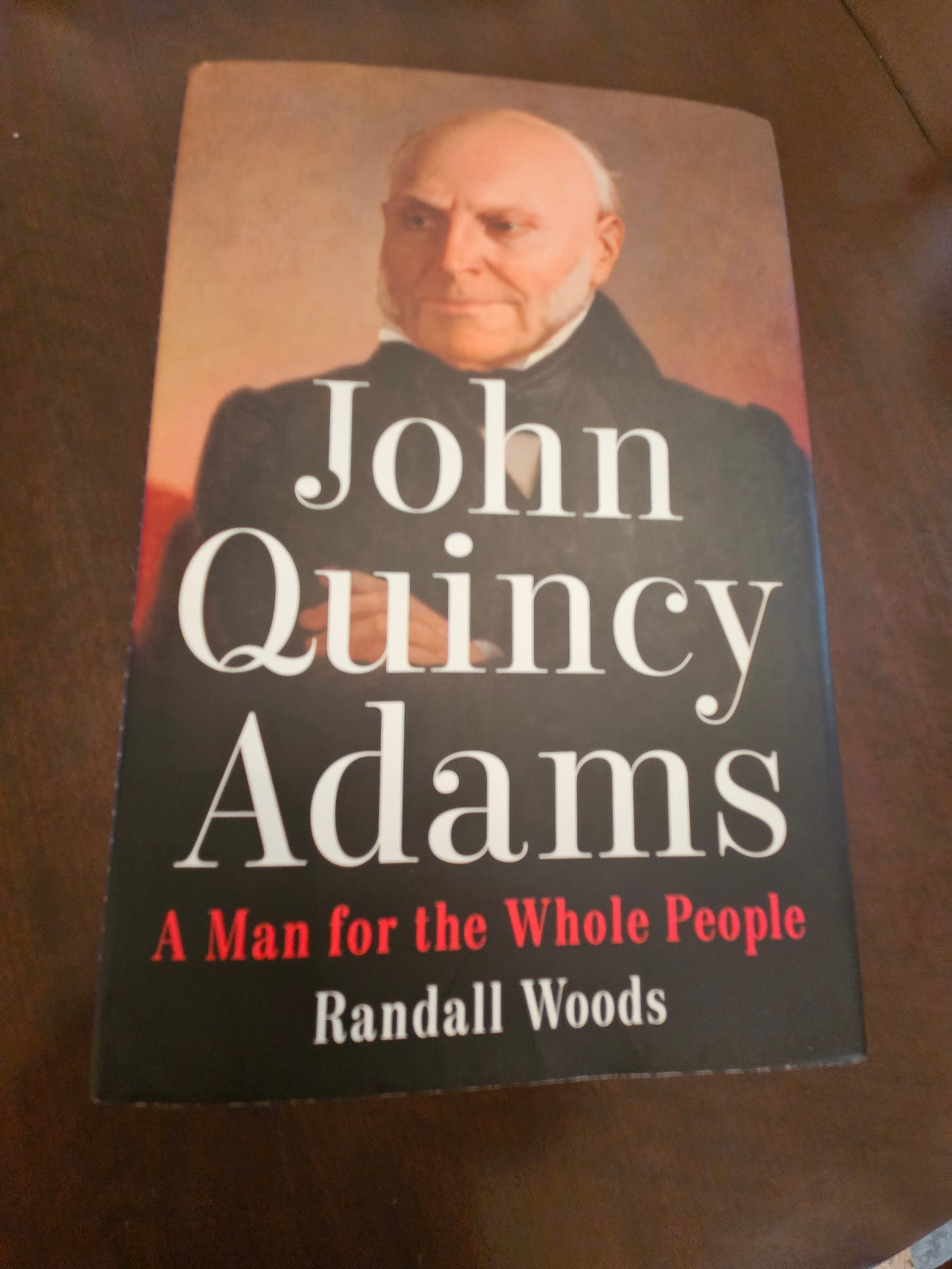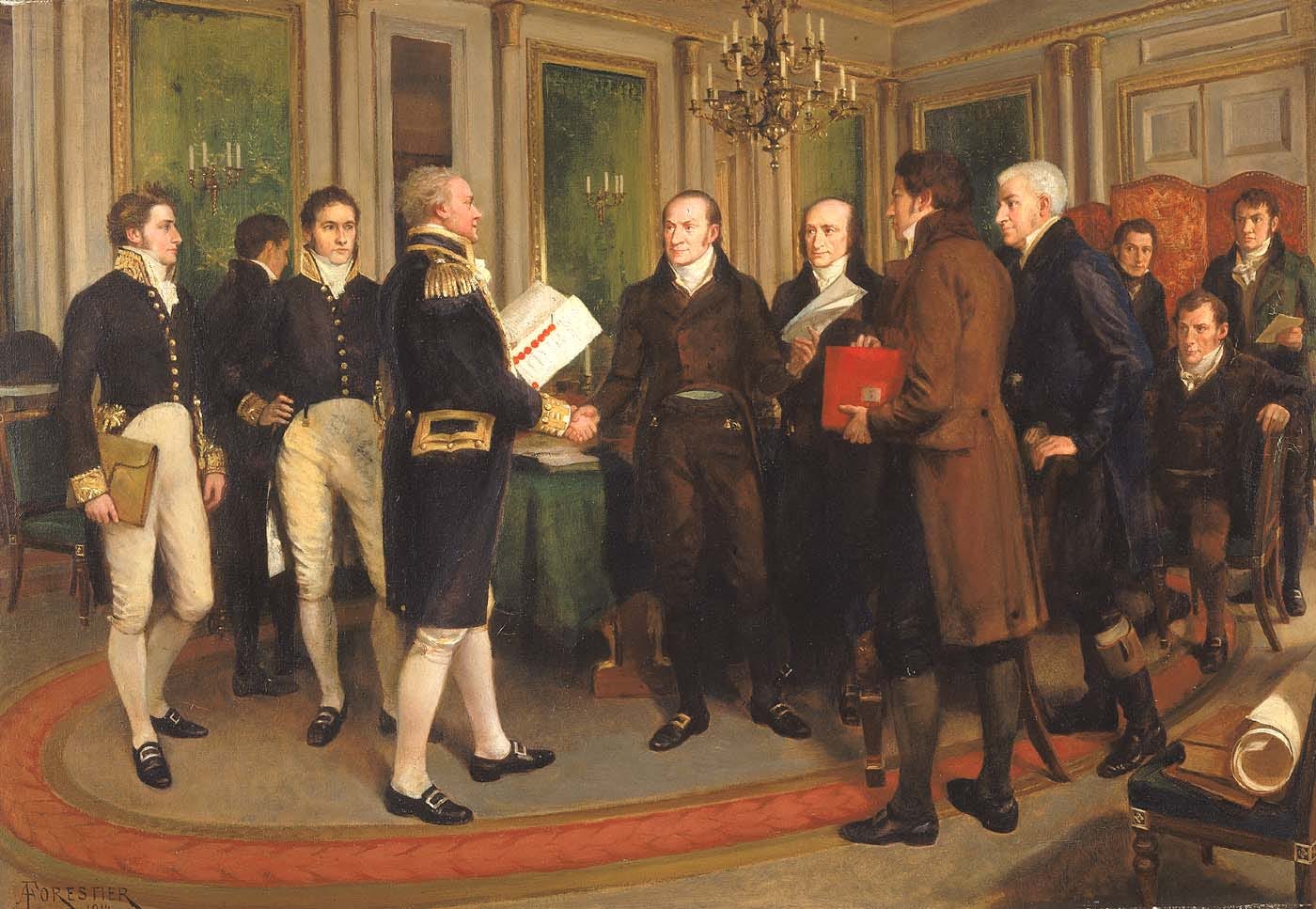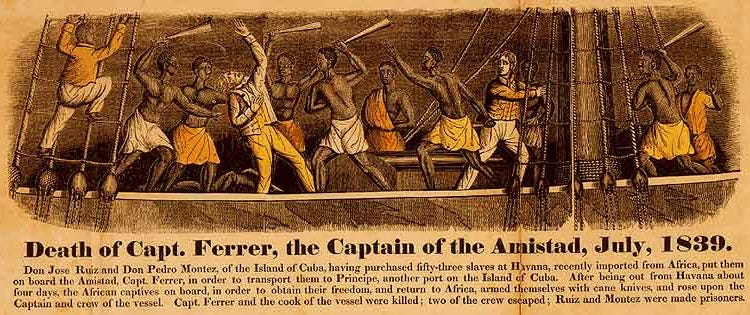
John Quincy Adams lived through two eras of United States history and provided service to his country throughout both. Being the son of the second president, John Adams, John Quincy Adams witnessed the events of the Revolutionary era in Europe where his father negotiated with leaders from France and England. At sixteen years old, he was a witness to the Treaty of Paris in which England acknowledged America’s independence. John Quincy Adams would go on to play important roles in the period after the Revolutionary Era in which America began to expand its boundaries. Some of these expansions led to conflicts which would underlie the fissures that resulted in the Civil War.
The book I selected to read about John Quincy Adams is John Quincy Adams, A Man for the Whole People written by Randall Woods. It was published in 2024 and is 702 pages. In the reviews I read about the book, a lot of people said that they felt like the author went into too much detail about parts of his life that they felt were irrelevant. I felt that Woods did a fantastic job going into detail and telling the story often in the words of Adams as well as others of his period. He gave a thorough analysis of his personal and political life.
John Quincy Adams on finding love
Adams kept details of his life in his journal. He wrote about his love life, at times describing frustration in his early pursuits of love. At one point he was pursuing a woman who would seem sometimes to return his affections and at other times would seem only interested in him as a friend. Adams wrote a poem about his frustrations with this relationship:
“Let Poets boast in smooth and labored strains, Of unfiltered passions and pretended pains, To my rude numbers, Delia now attend, Nor view me, as a lover, but a friend.”
Adams eventually fell for another woman, but due to pressure from both his parents as well as hers, this relationship also did not work out, and he became very frustrated. This frustration seemed to develop into a grudge he would hold toward his mother for a long time.
He did eventually meet his wife, Louisa Catherine Johnson Adams, who was born in England, while on a diplomatic mission in Europe. She and Melania Trump are the only two foreign-born first ladies. John and Louisa’s courtship was filled with a great deal of drama as he seemed to be torn between pursuing marriage and having enough time for his books and his service to the country. He eventually decided to make the jump, and they married while he was overseas.
Political Life
Adams was given opportunities by both Washington and Madison to serve in diplomatic roles in Europe. He served for many years as ambassador to Russia and developed a strong rapport with Tsar Alexander I, which would prove important in maintaining trade relationships during the global turmoil that occurred during the tense years around the War of 1812 and the invasion of Russia by Napoleon. Adams would go on to serve as Secretary of State to James Monroe and partake in the signing of the Treaty of Ghent which ended the War of 1812.
Adams was elected as president in 1824 against the Populist candidate Andrew Jackson in a race so close that the House of Representatives had to decide on the winner. During his presidency Adams attempted to work on projects that promoted the sciences and infrastructure, such as a national university, but was not able to make much progress due to opposition in Congress. He was then defeated by Andrew Jackson in 1828. Adams was bitter after the loss. Eventually he was encouraged by political allies to run for House of Representatives in 1830. Both his wife and especially his son felt that in serving this role he would ruin his reputation and would be humiliated in doing so. However, Adams seemed to be treated like a national icon in his time in office and would serve until he died in 1848.
In his time as a member of the House of Representatives, Adams reluctantly became a voice for abolitionists. Though he refused to outright align his name with the cause, he would passionately speak out against slavery and against the gag rule which tabled any petitions against slavery. Adams’ petitions would often be met with fury from representatives of Southern states. Adams represented a group of African people taken into slavery by the Spanish ship, Amistad, in a Supreme Court case. Adams’ defense resulted in their freedom and return to their home. My sister and I watched the movie based on the Amistad case and would highly recommend it if you would like to see this period of American history brought to life.
At one point in the book, the author shares a description written by Charles Dickens of what the House of Representatives looked like at the time of Dickens’ visit in 1842. This describes what a work day may have looked like for Adams at the time:
“The Senate is a dignified and decorous body, and its proceedings are conducted with much gravity and order. Both houses are handsomely carpeted; but the state to which these carpets are reduced by the universal disregard of the spittoon with which every honourable member is accommodated, and the extraordinary improvements on the pattern which are squirted and dabbled upon it in every direction, do not admit of being described. I will merely observe, that I strongly recommend all strangers not to look at the floor; and if they happen to drop anything, though it be their purse, not to pick it up with an ungloved hand on any account.
It is somewhat remarkable too, at first, to say the least, to see so many honourable members with swelled faces; and it is scarcely less remarkable to discover that this appearance is caused by the quantity of tobacco they contrive to stow within the hollow of the cheek. It is strange enough, too, to see an honourable gentleman leaning back in his tilted chair with his legs on the desk before him, shaping a convenient "plug" with his penknife, and when it is quite ready for use, shooting the old one from his mouth, as from a pop-gun, and clapping the new one in its place.”
We have mentioned the American Colonization Society in prior Silent Sod posts. Member of this society believed the solution to the problem of slavery was that the enslaved in America should be freed and relocated to other territories like Africa or Haiti. I found a comment of Adams in response to this proposition to be the most insightful of all of the presidents I have read about so far:
“Like it or not, the economy of the United States depended upon the labor of Blacks, both free and enslaved.”
Death in the House
John Quincy Adams devoted his entire life up to the last minute to service to the nation. On February 21, 1848, John Quincy Adams collapsed in the House of Representatives as he was about to speak in opposition to the Mexican-American War.
His death to me was symbolic in two ways. One, it showed how despite differing views, the Congress was still united in that members on both sides of the aisle surrounded him. Additionally, Adams was very keen on the fact that the nation was headed toward a Civil War on the issue of slavery. I almost had chills reading the description that the author provided of Abraham Lincoln, then a freshman congressman, witnessing the death of Adams, an eerie allusion to the dark times which Adams had spoken of on the horizon.
Conclusions
Reading about Adams led to some self reflection. So far in reading about the American presidents, two have stood out as my favorite to read about. One was William Howard Taft, who I read about in the memoirs of Titanic passenger Major Archibald Butt. John Quincy Adams has been my other favorite so far. I wondered why would these two obscure presidents stand out as favorites to me? There are a few reasons I could come up with. Both of the books I read about them provided a ton of first hand accounts versus subjective commentary. Both of these men had fathers who instilled the importance of public service and education. I do not believe either of them were as highly regarded as some other presidents who had stronger personalities and military backgrounds, however I believe there is a lot to be learned in reading about these two figures. They both took their political losses in stride and went on to serve in roles no other presidents served post presidency, Adams as a member of the House of Representatives and Taft as a Supreme Court justice. I wonder what other presidents will stand out in my future readings.
The thing that I most enjoyed about John Quincy Adams is reading from excerpts of his diary. I not only learned about the bright spots and challenges of his life but also those of the developing American nation. Perhaps this is helpful in digesting some of the happenings of our times, to know that we have faced and overcome complex days before.
In Presidential Picks Part 6.5 I will discuss a visit to an observatory in Cincinnati that John Quincy Adams played a role in establishing.
Sources:
https://victorianweb.org/art/illustration/nast/82.html
Woods, Randall. John Quincy Adams: A Man for the Whole People. Dutton. 2024.










If I ever get to retire I think I will read his diaries! His wife also wrote a journal about her travels across Europe during the invasions by Napolean. By the way, she had like four miscarriages while Adams was serving in Europe due to the stress and being apart from her family who was in America, very rough.
I enjoyed this read so much.
Your research and your engaging flow of words give me reason to look forward to reading your next article.